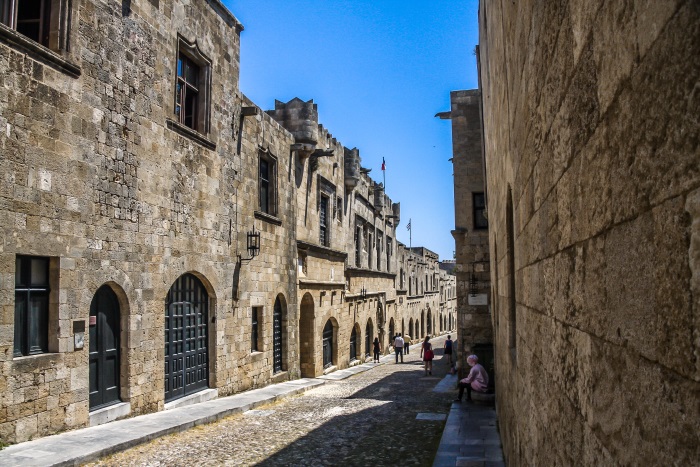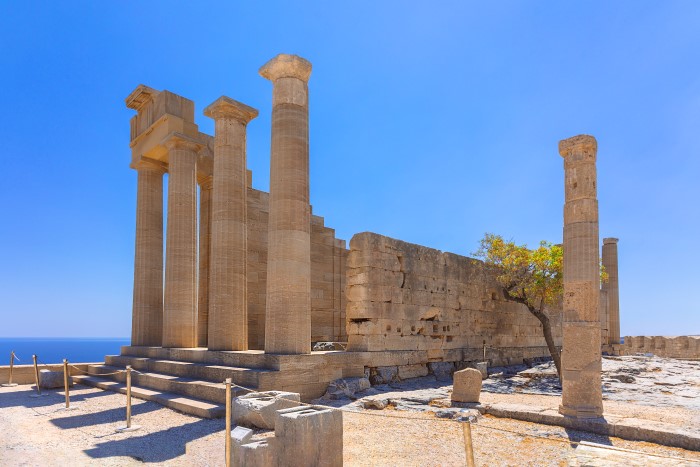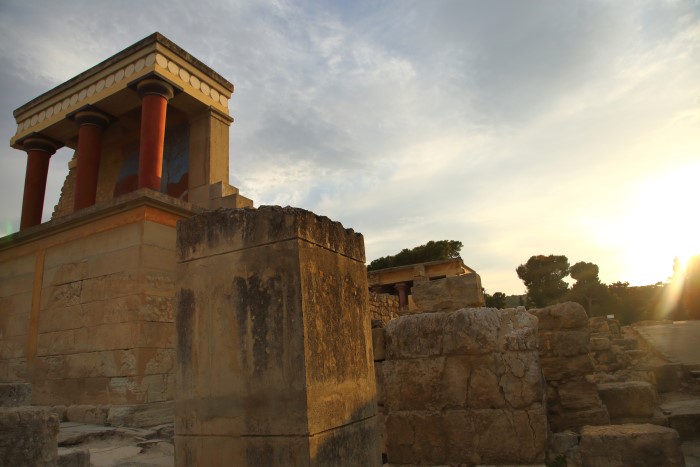The History and Architecture of the Greek Islands: Exploring Cultural Gems

The history and architecture of the Greek Islands provide a rich cultural experience for travelers and history enthusiasts alike. These islands have been shaped by the many empires that vied for control throughout the centuries, leaving behind a legacy of striking architectural styles and fascinating historical narratives. From the iconic temples of Ancient Greece to the Byzantine churches and Venetian fortresses, the Greek Islands offer an immersive journey into the past.
Each island boasts its own unique character, providing visitors with a diverse array of cultural encounters. The islands of Mykonos, Santorini, and Crete for instance, offer a combination of stunning natural beauty, ancient ruins, and vibrant local traditions. Additionally, the islands’ historical sites are often situated against the mesmerizing backdrop of the Aegean Sea, which only enhances their allure.
As travelers embark on their cultural tour of the Greek Islands, they will not only have the opportunity to explore the architectural wonders of Ancient Greece but also delve into the rich history behind them. The islands are truly a treasure trove for those who wish to appreciate the diverse influences that have shaped this remarkable region over time.
Historic Overview of Greek Islands
Early Civilizations
The Greek Islands have a rich history that dates back to the early civilizations in ancient times. During the Bronze Age, the Minoans and Mycenaeans established influential cultures on the islands of Crete and Mycenae respectively, laying the foundation for the later development of the Greek civilization.
Classical Period
During the Classical Period, the Greek Islands experienced significant growth in terms of art, architecture, and philosophy. The era encompassed two core architectural styles, the Doric and the Ionic orders, which laid the groundwork for the development of architecture in the Mediterranean world. The islands mainly served as centers for trade and the establishment of new colonies, which contributed to the influence of Greek culture across the region.
Byzantine Era
Following the Roman Empire’s division, the Byzantine Empire was established, and the Greek Islands became an essential part of its territory. The Byzantine period saw the integration of Christian themes with Greek traditions, resulting in the construction of beautiful churches and the development of religious art within the islands.
Ottoman Rule
During the 15th century, the Ottoman Empire conquered the Byzantine Empire, which brought an end to the Greek Islands’ independence. The islands fell under Ottoman rule for several centuries, but their strong cultural heritage and Orthodox Christianity remained intact despite foreign rule.
Modern Greece
In the 19th century, the Greek War of Independence led to the liberation of the islands and the establishment of the modern Greek state. Today, the Greek Islands continue to celebrate their rich history, which is evident in their architecture, art, and cultural traditions that attract visitors from around the world.
Distinctive Architecture of Greek Islands
Cycladic Architecture

The architecture of the Cyclades has a unique identity, characterized by simple yet elegant geometric designs. This style is largely influenced by the region’s geography and the availability of materials. Whitewashed cubic houses with flat roofs dominate the landscape, offering practical solutions for insulation and protection against the elements. The narrow streets and small balconies also reflect the need to create compact, functional spaces due to the terrain’s natural limitations. Blue accents on doors and windows are a popular feature, often symbolizing the connection to the sea and the sky. Some examples of this architectural style can be found on islands like Mykonos and Santorini.
Dodecanese Architecture

Situated in the southeastern Aegean Sea, the Dodecanese islands showcase a diverse range of architectural influences due to historical connections with neighboring countries. One of the defining characteristics of the Dodecanese architecture is the prevalence of medieval structures, such as castles and fortresses built by the Knights of St. John. The island of Rhodes, in particular, is known for its medieval Old Town, which is designated as a UNESCO World Heritage site. The island of Kos, on the other hand, is home to an exceptional Greek cultural patrimony and showcases structures from various eras, including ancient Greek temples, Roman villas, and Byzantine churches.
Ionian Architecture
Located along the western coast of Greece, the Ionian islands are characterized by a distinct architectural style influenced by Venetian, French, and British rule. Traditional Ionian architecture is a harmonious blend of these foreign elements and classical Greek motifs. Some of the key features include pastel-colored buildings, four-story edifices with curved rooftops, and intricate cast-iron balconies. Corfu Town, the capital of the island of Corfu, offers an excellent example of the unique architectural heritage of the Ionian islands, with its elegant mansions, grand palaces, and lush gardens inspired by Italian Renaissance and Baroque styles.
Famous Architectural and Cultural Landmarks
Acropolis of Lindos

The Acropolis of Lindos is an ancient archaeological site located on the island of Rhodes. It dates back to the 4th century BC and showcases both the Doric and Hellenistic architectural styles. The site comprises the Temple of Athena Lindia, a Byzantine church, and the remains of a medieval castle built by the Knights of St. John. Its elevated position offers stunning views of the surrounding coastline and the white-washed village of Lindos below.
Chora of Patmos
Chora of Patmos, a UNESCO World Heritage site, is a beautifully preserved medieval village situated on the island of Patmos. It is renowned for its narrow labyrinthine streets, traditional whitewashed houses, and the prominent Monastery of Saint John the Theologian—the primary religious and cultural attraction in the area. Built in the 11th century, the monastery houses a valuable collection of Byzantine art, religious relics, and ancient manuscripts, including the famous Apocalypse of St. John, written on Patmos island itself.
Corfu Old Town
Corfu Old Town is a historic district located on the island of Corfu, characterized by its Venetian architecture and charming narrow streets, known as “kantounia.” The town is a UNESCO World Heritage site, home to notable landmarks such as the Old Fortress, the Saint Spyridon Church, and the Liston—a colonnaded street lined with cafes and boutiques. Corfu Old Town reflects the island’s diverse history, having been ruled by various powers, including the Venetians, French, and British, each contributing to the town’s unique architectural heritage.
Santorini’s Cliffside Villages
Santorini’s Cliffside Villages, including Oia, Fira, and Imerovigli, are famous for their stunning Cycladic architecture and spectacular views of the caldera. Traditional whitewashed cave houses and blue-domed churches cling to the dramatic cliffs, offering visitors a unique blend of natural and manmade beauty. The villages have narrow alleyways, vibrant shops and galleries, and numerous terraces and viewpoints, where one can appreciate the beauty of the island and its breathtaking sunsets.
Preservation and Restoration Efforts
The history and architecture of the Greek Islands showcase the rich cultural heritage and significance of the region. Preservation and restoration efforts play a crucial role in maintaining the integrity of these ancient sites.
One of the most notable examples of such efforts can be found at the Palace of Knossos on the island of Crete. The restoration process at Knossos began almost immediately after its discovery and has been characterized by three different phases, each led by a different architect—Theodore Fyfe, Christian Doll, and Piet De Jong, all with varying restoration philosophies (Khan Academy). These efforts have ignited ongoing discussions about the challenges and intricacies between conservation and restoration, as modern materials are often used to maintain the appearance of ancient structures (Smarthistory).
Another important aspect of preservation efforts in the Greek Islands is the involvement of international organizations. UNESCO, for instance, has played a significant role in preserving and maintaining various cultural sites. The organization, through concerted efforts with national governments and experts from around the world, has been working to safeguard and manage these precious architectural and historical monuments (UNESCO).
Local communities also play a vital part in the preservation and restoration of the historical sites in the Greek Islands. They recognize the importance of these cultural assets and contribute their time and resources to ensuring their longevity for future generations.
To summarize, preserving and restoring the historical sites and architecture of the Greek Islands involve a collaborative effort from international organizations, governments, architects, local communities, and experts. It is through their tireless dedication to managing these precious cultural assets that the Greek Islands can continue to provide invaluable insights into the region’s rich history and cultural heritage.
Experiencing Greek Island Culture and Architecture Today
The Greek Islands offer a rich and diverse cultural experience for travelers, showcasing a wide range of historical architecture and various artistic and cultural expressions. In this section, we will discuss three key aspects of the Greek Island experience: museums and galleries, cultural tours, and local festivals and events.
Museums and Galleries
One of the best ways to appreciate the history and architecture of the Greek Islands is by visiting numerous museums and galleries throughout the region. Some of the most renowned museums include the Archaeological Museum of Kos, which is famous for its ancient artifacts and connection to the life of Hippocrates, and the Museum of Cycladic Art in Athens, which focuses on the remarkable art and architecture of the Cycladic civilization.
Additionally, many museums are housed in historically significant buildings or archaeological sites, providing context and a robust understanding of the region’s artistic and architectural heritage. Notable examples include the Acropolis Museum in Athens, which showcases the incredible history and architectural achievements of the ancient citadel, and the Delos Archaeological Museum, located on the sacred island of Delos – the birthplace of Greek gods Apollo and Artemis.
Cultural Tours
Exploring the Greek Islands through curated cultural tours allows visitors to delve deep into the history and architectural wonders of the region. Many tours focus on Greek architecture that changed history, with itineraries taking travelers to UNESCO World Heritage sites, such as the Acropolis and ancient temples in Italy. Other tours offer a mixture of historical exploration and relaxation, blending visits to architectural sites with leisure time on the picturesque beaches that the islands are known for.
Local Festivals and Events
Immersing oneself in local festivals and events is another fantastic way to experience the vibrant culture and architectural heritage of the Greek Islands. Many islands host annual celebrations that are deeply rooted in history, tradition, and community spirit. One example is the Feast of the Assumption of the Virgin Mary, a popular event in the Greek Orthodox calendar that is celebrated with great fervor and festivity across many islands.
Moreover, numerous cultural and artistic events showcase the region’s historical and architectural influences. This includes the Athens and Epidaurus Festival, which features performances of ancient Greek dramas and comedies in stunning open-air theaters, and the famous Aegina International Music Festival, where guests can enjoy classical music concerts against the backdrop of impressive ancient buildings.




